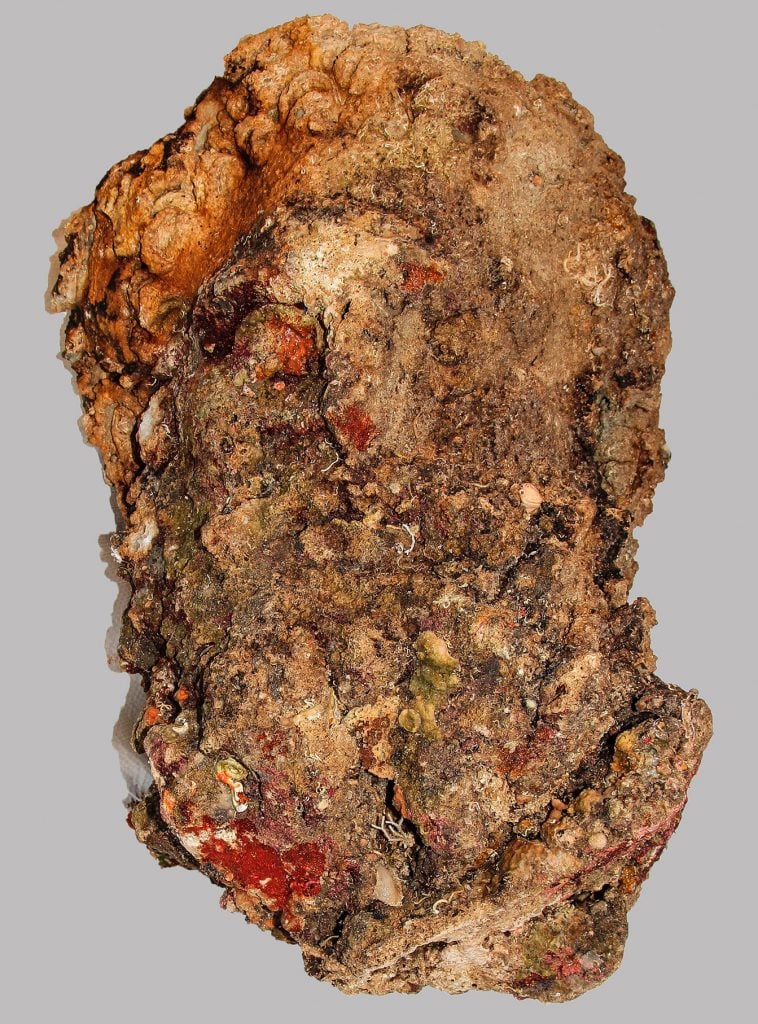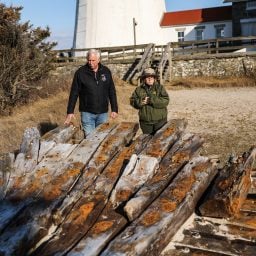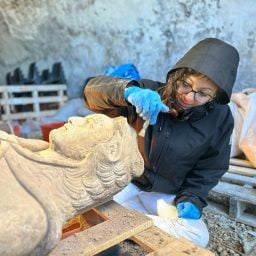The larger-than-lifesize marble head of a bearded male has been uncovered during an underwater excavation at the Antikythera wreck off the coast of Greece. It has been speculated that the fragment may be the missing piece of a headless statue of “Hercules of Antikythera,” recovered from the Roman-era wreck shortly after its discovery in 1900, and currently held at Greece’s National Archaeological Museum in Athens.

A view of the large marble head discovered at the Antikythera wreck. Photo courtesy of the Greek Ministry of Culture and Sport.
The remarkable find is one of several recently announced from explorations that took place from May 23 to June 15. This was the second session of a five-year underwater archaeological research program initiated by Greece’s Ephorate of Marine Antiquities, running through 2025. Other artifacts discovered include the base of a marble statue of a human figure, two human teeth that are awaiting DNA analysis, and accessories from the ship such as the lead weight for an anchor, iron nails and other metal masses that will eventually be x-rayed.
The Antikythera wreck is a Roman-era shipwreck that was first discovered by sponge divers off the coast of the island Antikythera in the Aegean Sea. Many treasures have previously been recovered from the site. Most astonishing of all was the Antikythera mechanism, a bronze device with gear wheels and scientific dials that was once used to calculate and display astronomical orbits. It has been likened to a modern-day computer.
The new discoveries were made possible thanks to a team of specialist divers from the Hellenic Coast Guard. They managed to uncover previously unexplored parts of the wreck by remove huge rocks weighing several tons, with the aid of special lifting bags that were placed beneath the rocks and filled with air. This method was developed by Hublot Xplorations, an initiative of the Swiss watchmaker Hublot, one of the program’s sponsors.
The ongoing project, carried out by the Swiss School of Archaeology in Greece, is being overseen by Dr. Angeliki G. Simosi, head of the Ephorate of Antiquities of Evia, and Lorenz Baumer, Professor of Classical Archeology at the University of Geneva.










